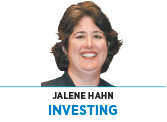Subscriber Benefit
As a subscriber you can listen to articles at work, in the car, or while you work out. Subscribe Now Target-date funds can be wonderful investments if used correctly. However, many investors just pick a fund, or use the 401(k) default, and hope for the best. Understanding the terminology and approach of target-date funds will help minimize investment surprises.
Target-date funds can be wonderful investments if used correctly. However, many investors just pick a fund, or use the 401(k) default, and hope for the best. Understanding the terminology and approach of target-date funds will help minimize investment surprises.
Target-date funds debuted in 1994 and received a major boost from the 2006 Pension Protection Act, as more plan sponsors selected them for their so-called qualified-default investment option.
The funds helped address the, “How do I invest my retirement savings” question. My concern is that investors do not understand the mechanics of target-date funds, the fees involved and the risks associated with this type of investment.
Target-date funds consist of a mix of stocks, bonds and other investments. Another name is “life-cycle funds” because they shift the investment mix over time. The further away from the “target date,” the greater exposure to stocks and other alternatives.
As the target date approaches, the fund’s assets shift to more conservative, less volatile asset classes. This shift is known as the “glide path.” Understanding the path is important for determining if a target-date fund is “to” a retirement date or “through” it. Even though you might retire within three to five years of a fund’s target date, you will probably still have many years where you will need your investments to grow.
I looked at the glide path of four fund families: Vanguard, American Funds, Fidelity and Invesco. They all had very different approaches to their glide paths.
The Vanguard glide path is relatively smooth from 20 years out to the target date and relatively flat beyond.
The Fidelity and American Funds paths were steeper and started gliding at different points. The Fidelity path was relatively flat until 20 years out, took a steep dive between 20 and 10, and then a more gradual shift until about 20 years after the target date.
The American Funds glide path is more pronounced starting at 30 years out and drops rapidly over the next 15 years and then even steeper from 15 years out to target date and beyond for a true “through” glide path. The Invesco Funds glide path is smooth from 40 years out until 10 years out, then switches to a predominantly balanced-fund approach for the duration.
Most target-date funds use a “fund of funds” approach in that they combine a group of underlying funds into the desired investment mix to meet the objective.
In addition to the glide path, I looked at the underlying investments in the 2030 target-date portfolio. Stock allocations ranged from 68 percent to 74 percent, with a consistent mix of U.S. and international allocations.
Fidelity had no exposure to international bonds but did have a small allocation to commodities. The underlying Invesco positions were either futures or swaps. American Funds had an almost 6 percent allocation to short-term investments. So, even though they are all target date 2030, the risk profiles are very different.
The other difference is in the fee structure. A quick search of Morningstar returned 232 2030 target-date fund offerings. The highest expense ratio was 1.86 percent and the lowest was 0.08 percent. The five-year returns ranged from 4.42 percent to 9.47 percent. Useful benchmarks are difficult to create due to the dispersion in glide paths and underlying investment philosophies.
While target-date funds have helped investors become better diversified, it is important for investors to understand the underlying investment philosophy, allocations, asset-class mix and fund expenses. This deeper analysis will help investors pick a fund family and target date more closely related to their risk profile and investing goals.•
__________
Hahn is a certified financial planner with WWA Planning and Investments. She can be reached at 812-379-1120 or jalene@wwafp.com.
Please enable JavaScript to view this content.
